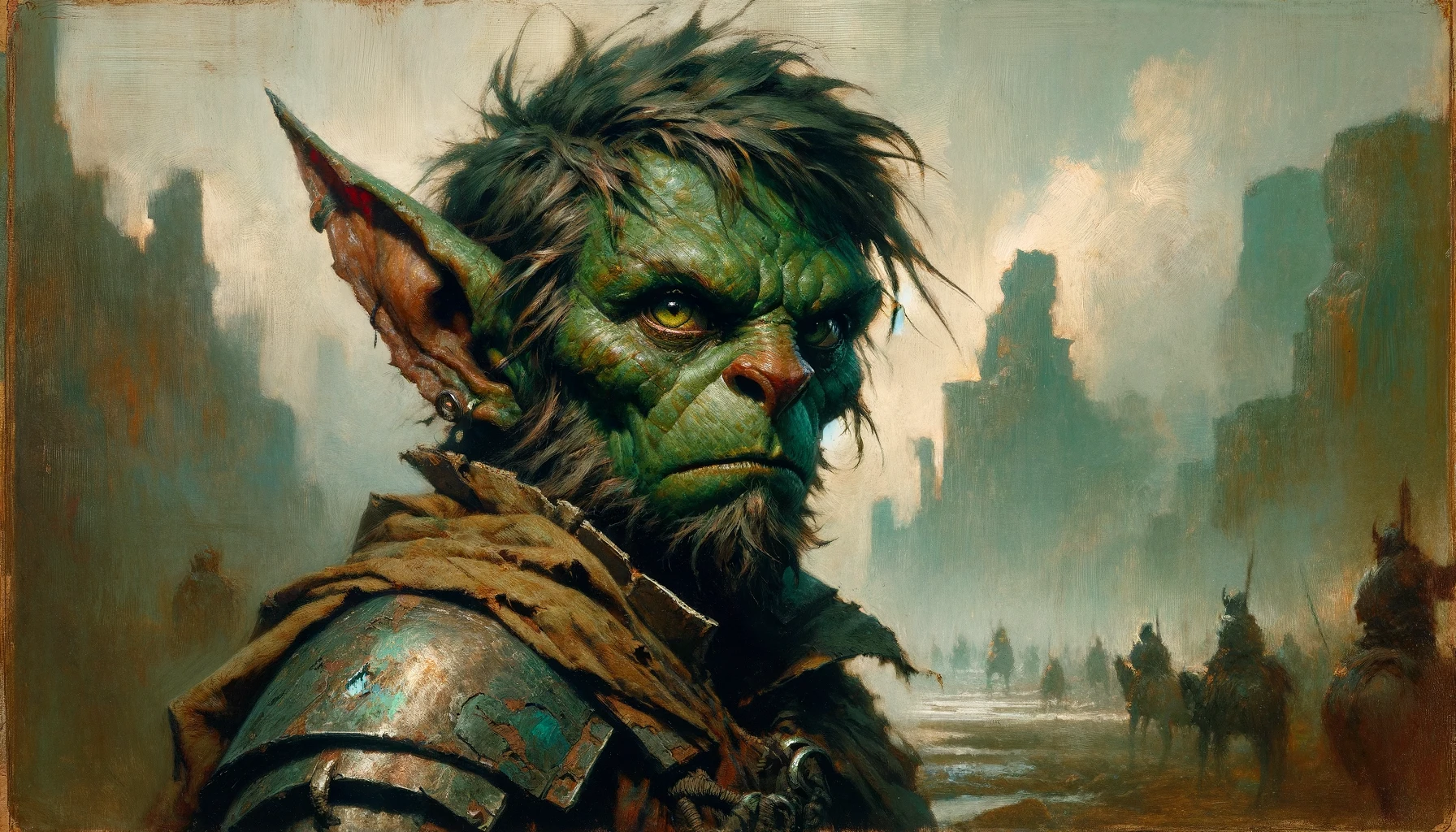Goblins are small, green-skinned creatures known for their craftiness, resourcefulness, and a penchant for mischief and survival. Despite their reputation for being troublemakers and scavengers, Goblins possess a complex society and culture that is often misunderstood by the larger races. Living in tight-knit clans within caves, dense forests, or the outskirts of civilization, Goblins are adept at making the most of their surroundings, thriving in environments others might deem inhospitable.
Society and Culture
Goblin society is clan-based, with each clan ruled by the strongest or most cunning leader. These leaders maintain their position through a combination of strength, guile, and the loyalty of their followers. Goblins value cleverness and the ability to acquire resources, whether through scavenging, theft, or trade with other races.
Despite their reputation, Goblins have a rich cultural tradition that includes storytelling, song, and the creation of intricate trinkets and gadgets. Goblin engineers and tinkers are capable of crafting surprisingly sophisticated devices from seemingly worthless materials.
Relations with Other Races
Goblins are often viewed with suspicion and hostility by other races due to their reputation for theft and mischief. However, Goblins are highly adaptable and can be found living on the fringes of many societies, where they often take on roles as merchants, mercenaries, or even adventurers. Goblins have a particular affinity for other marginalized races and can form strong bonds with individuals who treat them with respect and dignity.
Goblin Adventurers
Goblin adventurers are driven by a variety of motives, from simple survival to a desire for riches, power, or even just curiosity about the world. Their small size, agility, and cunning make them excellent rogues and scouts, but Goblins can succeed in a variety of roles depending on their skills and interests. A Goblin adventurer might seek to prove their worth, escape the confines of their rigid clan structure, or simply find a place where they can belong. Regardless of their goals, Goblins bring a unique perspective and set of skills to any adventuring party, proving that even the smallest creatures can have the biggest impact.
Age
Goblins reach adulthood around the age of 8 and have a lifespan of up to 60 years. They mature quickly, and their coming-of-age ceremonies often involve daring feats of skill and cunning to prove themselves to their clan.Alignment
Goblins lean towards chaos, valuing freedom and the pursuit of personal gain over the constraints of laws and order. They tend towards neutrality or evil, but goblin adventurers can be of any alignment, reflecting their individual personalities rather than societal norms.
Size
Goblins are small and nimble creatures, standing around 3 feet tall on average.Your size is small.
Speed
Your base walking speed is 30 feet.
Your base swimming speed is 15 feet*.
Your base climbing speed is 15 feet*.
* calculated speed.
Languages
You can speak, read, and write: Common, Goblin.
Ability Score Increase
- Dexterity: +2
- Intelligence: +1
Skill Proficiency
You have the following skills: Sleight of Hand, Stealth.
Race Features
Darkvision
Accustomed to life in dim environments, you can see in dim light within 60 feet of you as if it were bright light, and in darkness as if it were dim light.
Nimble Escape
You can take the Disengage or Hide action as a bonus action on each of your turns, reflecting your ability to slip away and hide quickly.
Lore
The Stream
Credits: Game Squires

